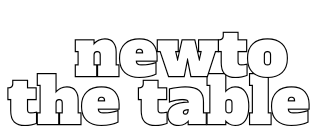Finding a home that doesn’t break the bank feels like searching for a unicorn in a haystack. With prices soaring and budgets tightening, many are left feeling like they need a magic wand to make their dream home a reality. But fear not! There are savvy strategies to help navigate the wild world of home affordability.
Table of Contents
ToggleUnderstanding Home Affordability
Home affordability refers to the financial capacity to purchase a home without facing undue financial strain. It involves evaluating income and expenses alongside prevailing market prices to determine what one can realistically afford.
What is Home Affordability?
Home affordability involves measuring the relationship between household income and housing costs. General guidelines suggest that no more than 30% of gross income should go towards housing expenses. Calculating this ratio aids buyers in identifying their price range. An understanding of both fixed and variable costs related to homeownership also plays a crucial role in adjusting perceptions of affordability.
Factors Affecting Home Affordability
Multiple factors influence home affordability. Interest rates directly impact mortgage monthly payments, making homes more or less accessible. Local market trends can either inflate prices or create opportunities for deals. Employment stability influences income levels, determining a household’s ability to afford down payments and ongoing costs. Additionally, credit scores affect loan eligibility, often resulting in varying interest rates that further complicate affordability.
Saving for a Down Payment


Saving for a down payment plays a vital role in achieving home ownership. A well-planned budget is essential for accumulating funds.
Setting a Budget
Creating a budget defines financial boundaries. Assessing current income and expenses provides a clarity that guides savings goals. Allocate a specific monthly amount towards the down payment. Prioritize needs over wants to maximize savings. Consider trimming discretionary spending, such as dining out or subscription services. Tracking progress motivates continued savings. Adjusting the budget periodically ensures alignment with financial goals.
Exploring Down Payment Assistance Programs
Evaluating down payment assistance programs can enhance affordability. Numerous local and state programs offer financial support to qualifying buyers. Requirements typically include income limits and first-time home buyer status. Investigating grants and low-interest loans provides additional avenues for funding. Researching these programs enables informed decisions and reduces out-of-pocket expenses. Engaging with real estate agents or financial advisors can uncover available resources. Utilizing assistance makes home buying more attainable, easing the financial burden of a down payment.
Improving Your Credit Score
A strong credit score significantly impacts home affordability. Lender evaluations often hinge on this score, influencing loan approval and interest rates.
Importance of a Good Credit Score
A good credit score indicates responsible financial behavior. Higher scores often lead to better mortgage rates, which lowers overall housing costs. Lenders typically favor borrowers with scores above 700. Individuals with higher credit ratings enjoy greater access to favorable terms and lower monthly payments. Maintaining a good credit score improves the likelihood of securing a loan and simplifies the home-buying process.
Tips to Boost Your Credit Score
Monitoring credit reports regularly ensures accuracy and highlights areas for improvement. Paying bills on time consistently reflects reliability to lenders. Reducing outstanding debt lowers credit utilization ratios, which positively affects scores. Increasing credit limits can also benefit overall utilization rates. Avoiding new credit inquiries while paying off balances protects the score from potential dips. Lastly, diversifying credit types demonstrates creditworthiness and can contribute to a stronger score.
Choosing the Right Mortgage
Selecting the right mortgage is essential for achieving home affordability. The choice between fixed-rate and adjustable-rate mortgages significantly impacts overall housing costs.
Fixed-Rate vs. Adjustable-Rate Mortgages
Fixed-rate mortgages maintain the same interest rate throughout the loan term, providing stability in monthly payments. Buyers can plan their budgets without worrying about fluctuating rates. On the other hand, adjustable-rate mortgages usually start with lower rates that can change after an initial fixed period. While these can offer short-term savings, unexpected rate increases may lead to higher monthly payments later. Homebuyers should carefully assess their financial situations and long-term plans before making a decision.
How to Shop for the Best Rates
Shopping for the best mortgage rates requires thorough research and comparison. Start by collecting quotes from multiple lenders to identify the most competitive offers. Compare terms, fees, and additional costs associated with each mortgage option. Utilize online tools to gather information and access current market trends. Checking with credit unions and local banks can yield favorable rates as well. Timing can also play a crucial role: securing a mortgage during periods of lower interest rates may significantly enhance home affordability. Always aim to understand the total loan costs, not just the interest rate alone.
Additional Home Affordability Tips
Exploring alternative strategies can enhance home affordability.
Consider Buying Fixer-Uppers
Buying fixer-uppers can significantly reduce initial costs. These properties often sell for lower prices than move-in-ready homes. Homebuyers with a vision and some DIY skills can turn these houses into dream homes over time. Budgeting for renovations helps in planning expenses effectively. Homebuyers often receive value-added benefits, such as neighborhood upgrades, after improvements. Consulting with contractors before purchasing can provide better insight into renovation costs. Financing options like renovation loans simplify the process by combining home purchase and repair costs into one mortgage.
Researching Different Locations
Researching different locations can uncover more affordable housing options. Some neighborhoods offer lower home prices while maintaining proximity to essential amenities. Exploring various regions might reveal hidden gems with great value potential. Studying local market trends helps in identifying upcoming areas likely to appreciate. Potential buyers often gain negotiating power in less sought-after neighborhoods. Investigating commute times and school district quality also contributes to informed decisions. Utilizing online resources and local market reports assists in gathering necessary data for effective location assessments.








